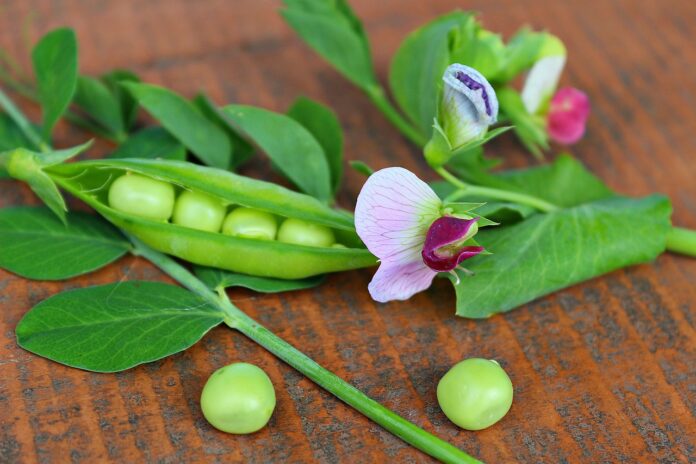Peas are a widely used and highly nutritious plant, found in various dishes worldwide. They can be prepared in numerous delicious and healthy ways, both traditional and vegetarian. Although peas are somewhat demanding to grow, the effort is worth it. Peas are also great when fresh, and even after freezing, their green pods retain most of their flavor and nutrients.
Facts About Peas:
- They are rich in fiber, which helps eliminate toxins and excess fluids from the body.
- There are seven types of peas worldwide.
- The common pea plant, which is widely consumed globally, can grow up to 2 meters tall.
- It is unclear when exactly humans started cultivating peas, but they were known thousands of years ago in ancient India.
- Regular consumption of peas can help reduce the risk of blood clots in the vessels.
- Peas aid the body in eliminating bile.
- Peas are extremely high in protein, comparable to the protein content in beef.
- Botanically, peas are seeds, not vegetables, as some might think.
- Globally, more than 15 million tons of peas are harvested annually.
- Pea seeds around 20,000 years old were discovered during archaeological excavations in Switzerland.
- For centuries, people consumed mature peas, but the now-popular green peas, meaning unripe and freshly picked, began to be eaten relatively recently, around the 17th century.
- In North America, peas were also popular. The third U.S. president, Thomas Jefferson, grew over 30 varieties of peas at his estate.
- Pea sausage was a staple food for German soldiers in the 19th and 20th centuries, up until the end of World War II. It was made from pea flour with added lard and meat.
- Among vegetable crops, peas are one of the richest sources of protein, second only to lentils.
- The largest producers of peas globally are China, Russia, and Canada. Together, these three countries account for more than half of the world’s pea production.
- In ancient China, peas were considered a symbol of fertility and wealth.
- Peas were widespread across England by the mid-11th century. Today, they are grown there much less.
- Bioplastics can be made using pea starch.
- Along with broad beans and lentils, peas were an important part of the diet for most people in the Middle East, North Africa, and Europe during the Middle Ages.
- In 16th-century France, peas with roasted pork fat were served both at the king’s table and at that of the commoners.
- Peas played a significant role in wedding rituals. Among Poles, peas were once the main wedding dish. Wedding participants even performed a dance holding a bowl of peas.
- In the English town of Witcham, regular pea-shooting competitions have been held since 1969. Participants aim at a target smeared with wax, no larger than a dartboard.
- Genetics and peas have a shared history. Austrian biologist Johann Mendel conducted experiments on this plant, leading him to discover heredity. This led to the creation of the field of genetics.
- Peas are excellent for producing fertilizer. During growth, nodules form on the roots that fix atmospheric nitrogen, essential for plants. After peas and other legumes, about 100 grams of mineral nitrogen per square meter remain in the soil.
- In the UK, a record was set by Janet Harris, who ate 7,175 peas in exactly one hour. The record was documented in 1984.
- Some scientists believe that peas were the first crop to be cultivated by humans near their settlements in the Mediterranean and Far East.
